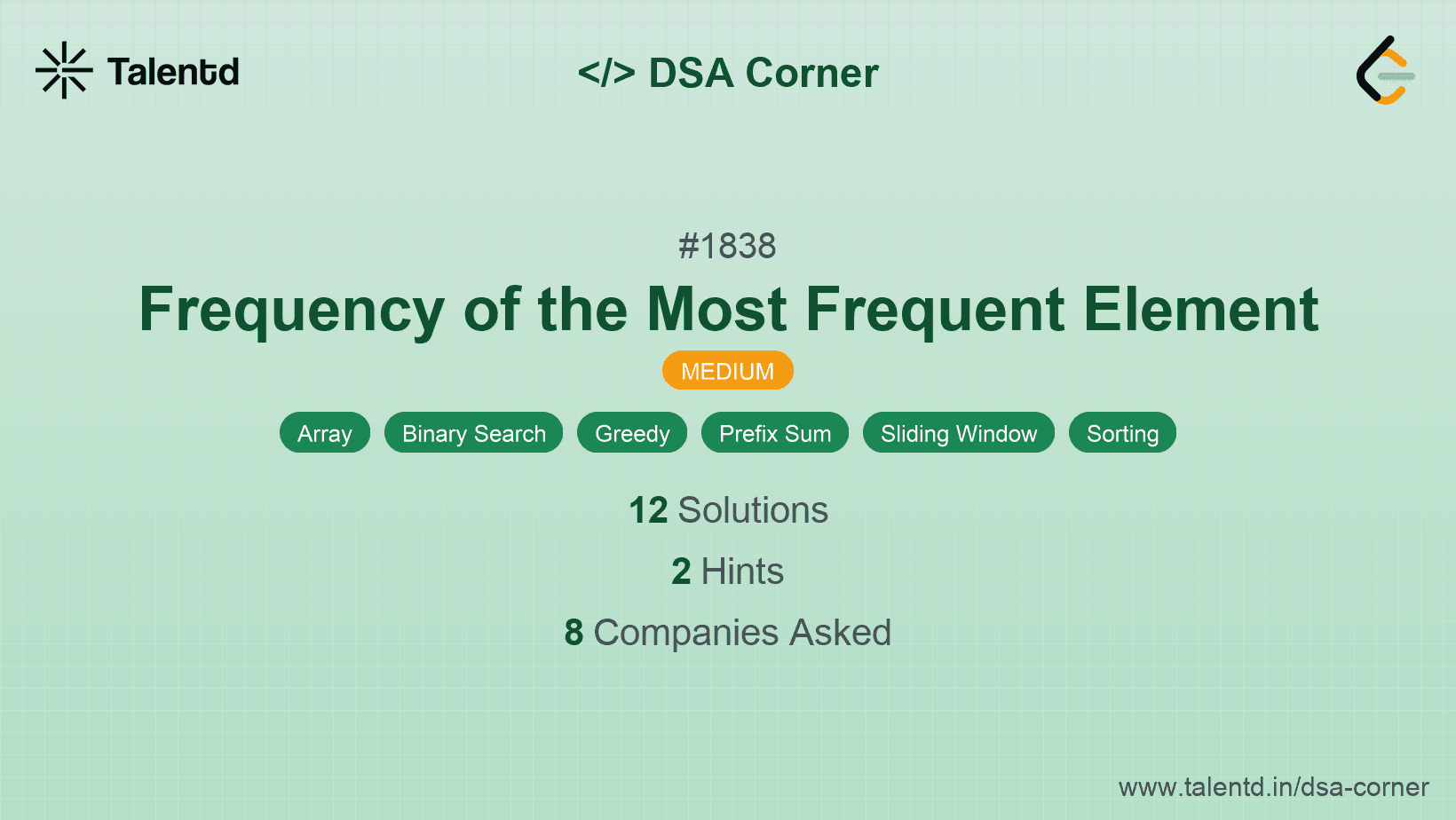
Sponsored
Sponsored
The sliding window technique is used to find the longest subarray where elements can be incremented to make them equal using at most k increments. We sort the array first to ensure it's easier to increment elements to become equal. We then use two pointers: one for the current end of the subarray and the other to represent the start. By checking the cost to transform the current subarray into an equal value using the difference between values and leveraging the sorted property, we can determine the maximum frequency we can achieve.
Time Complexity: O(n log n), due to sorting the array.
Space Complexity: O(1), as no extra space is used apart from variable allocations.
1#include <stdio.h>
2#include <stdlib.h>
3
4int compare(const void *a, const void *b) {
The C solution utilizes quick sort to sort the array and then employs two pointers, along with cumulative sums, to check the feasibility of increasing all numbers between two points to the right pointer's number with at most k increments. The result is updated to reflect the maximum length of this window that satisfies the condition.
This approach makes use of binary search in combination with prefix sums to efficiently find the maximum frequency possible by transforming elements. We first sort the array. For a given target frequency, we check through calculating the required increment operations using a prefix sum array and binary searching over possible solutions. This allows us to leverage efficient range queries and reduce time complexity.
Time Complexity: O(n log n), because of sorting and binary search iterations.
Space Complexity: O(n), due to additional space for prefix sums.
public class Solution {
bool CanAchieveFrequency(int[] nums, int freq, int k, long[] prefixSum) {
for (int end = freq - 1; end < nums.Length; ++end) {
long totalNeeded = (long)nums[end] * freq;
long currentSum = prefixSum[end] - (end - freq >= 0 ? prefixSum[end - freq] : 0);
if (totalNeeded - currentSum <= k) return true;
}
return false;
}
public int MaxFrequency(int[] nums, int k) {
Array.Sort(nums);
long[] prefixSum = new long[nums.Length];
for (int i = 0; i < nums.Length; ++i) {
prefixSum[i] = (i > 0 ? prefixSum[i - 1] : 0) + nums[i];
}
int left = 1, right = nums.Length, res = 1;
while (left <= right) {
int mid = left + (right - left) / 2;
if (CanAchieveFrequency(nums, mid, k, prefixSum)) {
res = mid;
left = mid + 1;
} else {
right = mid - 1;
}
}
return res;
}
public static void Main() {
Solution sol = new Solution();
Console.WriteLine(sol.MaxFrequency(new int[] { 1, 2, 4 }, 5));
}
}This C# solution follows the same pattern, sorting the array and applying binary search over possible frequencies. The prefix sum array is precomputed to speed up the checking process for possible frequency achievement via minimal extra operations.